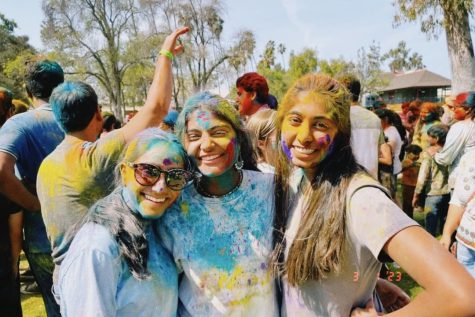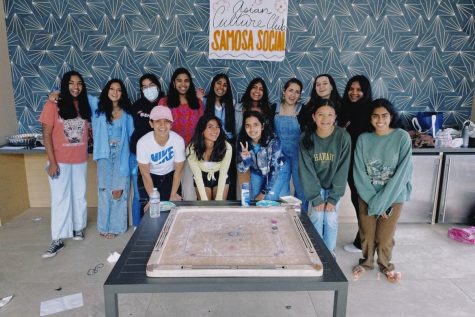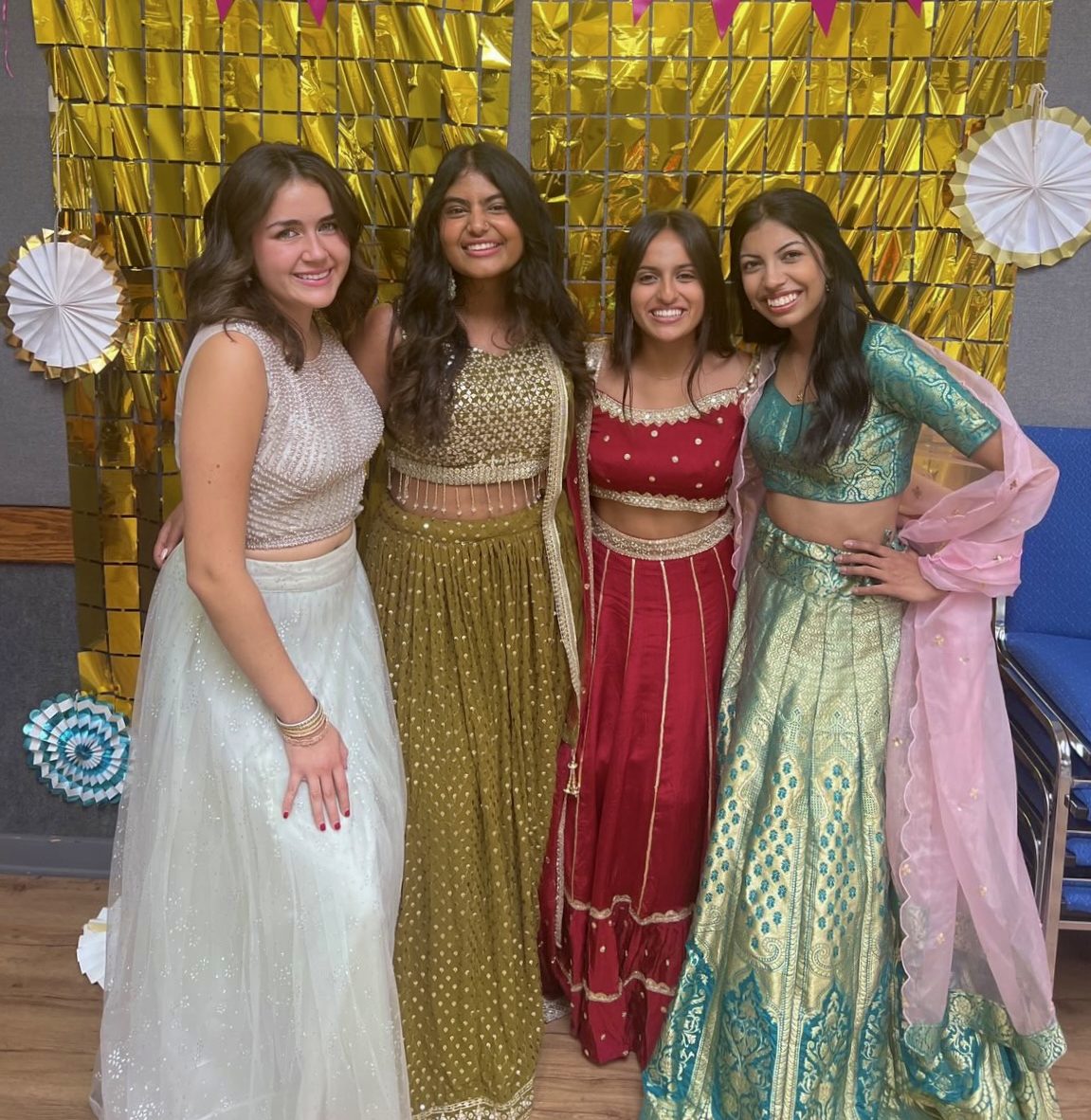Minor Details: Sanchitha Tippur
March 6, 2023
Diverse blends of students make up San Marcos High Schools Population, from different backgrounds all at the same place, we need to understand each other better.
Importance of Cultural Identity
Ethnicity forms identity. Whether it’s the language we speak, the values we hold closely, or our perspectives on life- who you are is rooted in the cultural background of those before you. Embracing her Indian blood, Senior Sanchitha Tippur gives insight to what it’s like being an “American Born Cultured Desi,” at San Marcos High School.
S-A-N-C-H-I-T-H-A. Tippur spells out her name for me, emphasizing its importance. Commonly mispronounced, the meaning behind “Sanchitha” translates to “a collection of good things,” in Sanskrit, the holy language of India.
“Our names are our identity… They tell a story of our heritage.” Tippur says, “If someone goes out of their way to pronounce my name correctly, I will always remember that.”
Her name being only the tip of the iceberg for all of which sets her apart, Tippur’s experiences growing up as an Indian minority plays a significant role in accepting her culture. In a study from the American Psychological Association, it is shown that, “many children and youth continue to experience poor mental health outcomes based on their… ethnic or racial minority status.” The feeling of being invisible or on the contrary- an alien- is one that many minority students can resonate with in their adolescence.
Growing Up Indian in America
Tippur looks back on her youth, “When I was really young.. I remember this kid saying ‘I step on brown people’ and he kicked me.” Tippur said, “Freshman year of high school in my history class, someone asked if I was a part of the Taliban.”
However, these microaggressions did not interrupt Tippur’s desire to express her culture, she explained that through family and her little community, she found reassurance and love. As Tippur grew older, the love for her culture grew stronger- thanks to Bollywood films and Hindi music. Instead of suppression, Tippur sought expression.
“My ethnicity is a huge part of who I am, culturally, my norms are very Indian,” Tippur said, “The more I keep doing what I’m doing, the more people will realize that this is just a reality for them. It’s not just me who’s [Indian]… it needs to be normalized.”
Instead of nit-picking our differences- celebrating them promotes tolerance and helps minorities feel more seen. In the average year, there are 16 holidays in India, Tippur accentuates Ugadi- The South Indian New Year, Diwali- The festival of lights, Holi- The festival of colors, and Nivaratri- nine days filled with dancing and food. These are times where the community is united and every person is valued- nevertheless, Indian students are forced to choose between religion and education when it comes to these holidays- causing them to feel lesser than their peers.
“We don’t get breaks for any of our religious holidays. That’s the thing that always irks me, there’s a really big gap between the ‘important holidays’ where majorities seem to be more important than the minorities. Already, we don’t have a lot of South Asians here, and it just makes it difficult to participate in our religions.”
This challenge is no stranger to Tippur, as she is also the equity and diversity director for San Marcos High School. Many students on campus face the same struggle when balancing religious holidays and school- like the lack of break during Ramadan or Eid for Muslims. Although the official solution to this problem is yet to be addressed, the little things are sufficient for the time being.
“From my perspective, it’s very difficult to make a movement on [creating breaks for holidays]… one thing is to start small, we can play more diverse music in the quad,” Tippur said, “As for the daily announcements, they can start notifying us of what holiday it may be that day. It starts with the small things, and eventually we’ll move up to bigger things.”

Connections and Celebrations
Celebration of diverse cultures and religions isn’t just a one day occasion, it’s something we should implement in our everyday lives. In an article from Partnership International, a global blog, it is read that sharing cultures can help, “dispel negative stereotypes and personal biases about different groups,” and make us recognize and respect lifestyles that aren’t necessarily our own. Aside from being the president of the South Asian club, Tippur shares her culture by making it known how proud she is of her country.
“I’ll clear up one misconception: India isn’t just a poor country…It’s like a totally different world… they’re very hospitable… Everyone is connected…” Tippur said, “It’s not what people tell you or what the world perceives it to be, [India’s] a lot more than that, it’s so beautiful, there’s so much going on in one country… there’s a significance to everything”
Flaunting her ethnicity proudly, Tippur educates many on her Indian roots. Through the South Asian Club, the Equity and Diversity Club and a podcast she and her friends, Shree and Subha, started, “American Born Cultured Desi,” (check it out) Tippur makes it a point to recognize her culture.
“As an Indian student, I want everyone to realize this is a huge part of my identity and to take into account how much that has impacted the way I look at the world.” Tippur said.
Tippur uses expression, education, and community to advocate for other Indian- Americans. Sharing what makes us who we are and embracing different cultures can help San Marcos High School in becoming a tolerant campus. Together we can celebrate and appreciate those who bring diversity into our campus.



Kelly Brown, Assistant Principal • Mar 13, 2023 at 10:44 am
This piece of writing is a beautiful tribute to cultural identity and a great reminder of the intersectional identities we all have, some of which we share and some where we can learn from others. Thank you for sharing what makes you you, Sanchita, and thank you for ensuring it was articulated so beautifully Fatimah.